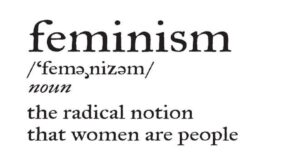Interesting Facts about Feminism
Feminism is a social, political, and cultural movement that advocates for gender equality and challenges the patriarchal systems that have historically oppressed women. The movement has a rich history, diverse perspectives, and key concepts that shape its theory and practice.

Table of Contents
History of Feminism:
- First Wave (1848-1920): Focus on women’s suffrage and property rights.
- Second Wave (1960s-1980s): Expanding to include issues like reproductive rights, workplace discrimination, and domestic violence.
- Third Wave (1990s-present): Emphasizing intersectionality, queer rights, and challenging traditional gender norms.

Key Writers and Works:
- Mary Wollstonecraft: “A Vindication of the Rights of Woman” (1792) – argued for women’s equality and challenged gender roles.
- Elizabeth Cady Stanton: “Declaration of Sentiments” (1848) – a leading figure in the women’s suffrage movement.
- Simone de Beauvoir: “The Second Sex” (1949) – explored the social and cultural construction of femininity.
- Betty Friedan: “The Feminine Mystique” (1963) – critiqued the constraints of domesticity and sparked the feminist movement.
- Germaine Greer: “The Female Eunuch” (1970) – argued for women’s liberation and challenged traditional gender roles.
- bell hooks: “Ain’t I a Woman?” (1981) – explored the multiple dimensions of black women’s lives.
- Judith Butler: “Gender Trouble” (1990) – introduced the concept of gender performativity.
Major Concepts and Literary Terms:

- Patriarchy: A system of male dominance and power.
- Gender Roles: Social expectations based on sex.
- Sexism: Discrimination based on sex.
- Misogyny: Hatred or disdain for women.
- Intersectionality: Considering multiple factors (race, class, sexuality) in gender analysis.
- Gender Performativity: Gender as a social performance.
- Essentialism: The idea that gender is an inherent, biological fact.
- Social Constructionism: The idea that gender is constructed by culture and society.
- Feminist Theory: A framework for analyzing gender and power.
- Gender Studies: An interdisciplinary field examining gender and sexuality.
Branches of Feminism:
- Liberal Feminism: Focus on legal equality and individual rights.
- Radical Feminism: Emphasizes the need to challenge and transform patriarchal structures.
- Socialist Feminism: Sees gender inequality as linked to class and economic oppression.
- Intersectional Feminism: Prioritizes the experiences of marginalized women and challenges multiple forms of oppression.
- Postmodern Feminism: Questions traditional notions of gender and challenges dominant discourses.

Challenges and Critiques:
- Internal Conflicts: Debates around issues like pornography, abortion, and transgender rights.
- Criticisms of Essentialism: Some argue that feminism can reinforce gender stereotypes.
- Accusations of Exclusion: Some groups, like women of color and LGBTQ+ individuals, feel marginalized within the movement.
- Backlash and Resistance: Anti-feminist movements and individuals who oppose gender equality.
This is a more detailed overview of feminism, covering its history, key writers and works, major concepts, branches, challenges, and critiques.
Here are some popular magazines associated with feminism:
- Ms. Magazine: A general-interest magazine that continues to produce in-depth feminist analysis.
- BUST: A magazine for young women covering various topics, including indie-pop culture and health.
- Feminist Review: An academic magazine that sustains as an interdisciplinary publication.
- The Women’s Review of Books: A magazine that provides a forum for discussing new writing by and about women.
- Women and Performance: A journal of feminist scholarship on different kinds of performance.
- EMMA: Germany’s flagship feminist magazine.
- Herizons: Canada’s most popular feminist magazine.
- Mslexia: A British magazine that encourages the creativity of young women writers.
- Abortion, Every Day: A news outlet that provides updates and commentary on abortion rights.
- The 19th: A publication that aims to empower women and LGBTQ+ individuals.
- Women’s eNews: A digital publication providing women’s perspectives on public policy.

Here are some male writers who have contributed to feminist thought:
- François Poullain de La Barre: A 17th-century French writer and philosopher who argued in favor of equality between men and women.
- Denis Diderot: A French philosopher and encyclopedist who wrote about women’s rights in the 18th century.
- Charles Louis de Montesquieu: An Enlightenment thinker who championed women’s education and wrote about strong female characters.
- Jeremy Bentham: An English philosopher who advocated for women’s rights, including equal rights in marriage and education.
- John Stuart Mill: A British philosopher who wrote “The Subjection of Women” and advocated for women’s suffrage in the British parliament.
- Parker Pillsbury: An American abolitionist and advocate for women’s rights who drafted the constitution of the American Equal Rights Association.
You can also learn about Marxism: 7 Important Writers and Concepts







One thought on “Interesting Facts about Feminism”